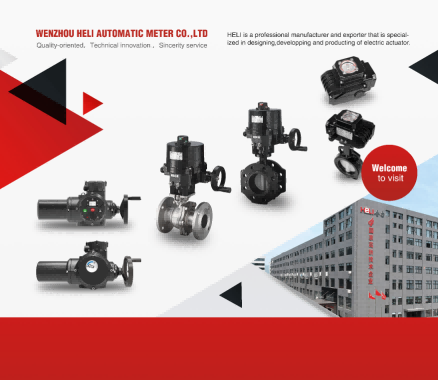
At its essence, an electric actuator consists of:
Electric Motor (AC, DC, or stepper) – The power source
Drive Mechanism – Transforms rotary motion into linear or rotary output
Position Sensor – Provides real-time feedback (encoders, potentiometers, resolvers)
Controller & Electronics – Brain of the system, processing commands
Housing & Gearing – Protects components and amplifies torque/speed
Unlike fluid power systems requiring compressors, pumps, and complex piping, electric actuators integrate seamlessly into digital control networks. They leverage electromagnetic fields to drive motion with near-silent operation, eliminating energy losses from air compression or fluid leakage.
Precision Control: Achieve micron-level positioning accuracy (±0.01mm possible) with programmable speed, force profiles, and complex motion sequences.
Energy Efficiency: Consume power only during motion or load holding (no idling losses). Reduce overall system energy by 50-70% vs. pneumatics.
Clean & Quiet: No oil leaks or exhaust air, making them ideal for pharmaceuticals, food processing, labs, and cleanrooms. Noise levels < 65 dB.
Smart Connectivity: Seamless integration with PLCs, SCADA, and IIoT via fieldbus protocols (EtherCAT, Profinet, Modbus TCP/IP, CANopen).
Simplified Infrastructure: Eliminate compressors, hydraulic power units, valves, and extensive piping – reducing footprint and installation costs.
Advanced Diagnostics: Built-in sensors enable predictive maintenance alerts for wear, overload, temperature, and cycle counting.
High Force Density: Modern designs deliver forces exceeding 100 kN for demanding industrial tasks.
Electric Linear Actuators:
Mechanism: Ball screw, lead screw, or belt drive
Key Uses: Valve automation, material handling, presses, testing equipment, solar tracking, hospital bed adjustment.
CNHELI Highlight: High-thrust IP66/IP69K rated actuators for harsh environments.
Electric Rotary Actuators:
Mechanism: Integral gearbox converting motor rotation to precise angular output.
Key Uses: Damper control, robotic joints, packaging machinery, conveyor diverters, butterfly valve operation.
Electro-Hydraulic Actuators (EHAs):
Hybrid Solution: Compact electric motor drives a local hydraulic pump for high-force linear motion.
Key Uses: Aerospace, heavy machinery, offshore equipment (eliminates centralized hydraulics).
Manufacturing & Robotics: Assembly line positioning, CNC tool changers, palletizing, welding arms. Precision boosts throughput by 15-30%.
Process Control (Oil & Gas, Chemical): Smart valve actuation for critical safety shutoffs (SIL 2/3 certified), flow control, blowout preventers. Explosion-proof designs essential.
Water/Wastewater Treatment: Automated sluice gates, filter presses, chemical dosing pumps requiring reliability in corrosive, wet environments.
Power Generation: Turbine control, fuel valve modulation, boiler feed systems needing high temperature stability.
Pharmaceuticals & Medical: Ultra-clean linear stages for filling machines, surgical robot joints, diagnostic equipment adjustment requiring ISO Class 5 compatibility.
Automotive & Aerospace: Test rig actuation, brake simulation, flight control surfaces, EV battery assembly requiring extreme precision.
Motion Profile: Stroke length / rotation angle, speed, acceleration, duty cycle (S1-S6).
Force/Torque Requirements: Dynamic and static (thrust/load capacity, breakaway torque).
Accuracy & Repeatability: Micro-stepping, backlash control.
Environmental: IP rating, temperature range, chemical resistance, shock/vibration.
Control Interface: Voltage (24VDC, 110VAC, 220VAC), feedback signals, communication protocols.
Safety: Integrated brakes, overload protection, position holds, safety torques.
Mounting & Integration: Flange type, shaft configuration, compactness constraints.
leverages two decades of motion control innovation to deliver robust electric actuator solutions engineered for industrial demands. Our product range offers:
Tailored Engineering: Application-specific modifications for thrust, speed, environmental hardening, or mounting.
Integrated Control: Plug-and-play solutions combining actuators, drives (servo/VFD), and controllers.
Global Certifications: ATEX/IECEx, UL/cUL, CE, SIL, ISO 9001:2015 manufacturing.
Advanced Materials: Stainless steel shafts, hardened gears, specialized seals ensuring longevity.
Smart Monitoring: Options for IoT-enabled actuators providing real-time health data to your CMMS.
Lifecycle Support: Engineering consultation, rapid prototyping, global technical service network.
Electric actuators are evolving with trends like:
Integrated Servo Intelligence: Motors, drives, and controllers merging into single compact units.
Wireless Power & Data: Eliminating cabling constraints for mobile applications.
AI-Driven Predictive Maintenance: Utilizing actuator data for failure prediction.
Tactile Sensing: Incorporating force feedback for collaborative robotics (Cobots).
Ultra-High Power Density: Advanced magnet materials enabling smaller sizes with higher outputs.
The shift towards electric actuation is more than a trend—it’s an operational necessity. From enabling the precision of robotic surgery to ensuring the safety of offshore oil platforms, these intelligent components deliver efficiency, reliability, and unprecedented control. As Industry 4.0 accelerates, selecting the right electric actuator partner becomes strategic.
Engineered to Perform. Designed to Endure.
Explore advanced electric linear and rotary actuator solutions at https://en.cnheli.com/ – where cutting-edge motion control meets industrial durability.
